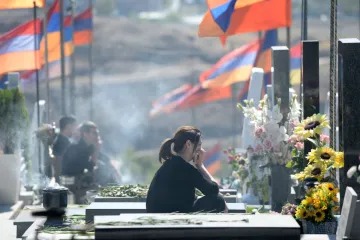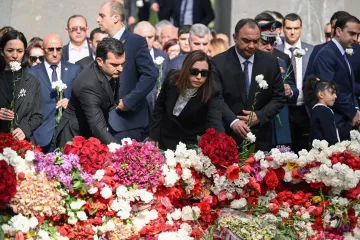Madrid, Spain, Aug 21, 2024 / 14:46 pm
The Holy See Press Office announced the appointment of Archpriest Kevork Noradounguian as the new ordinary for Armenian Catholics in Eastern Europe, assigning him the title of archbishop of Sebaste of the Armenians.
Until now, Noradounguian served as patriarchal vicar of the Institute of the Clergy of Bzommar and superior of the Convent of Our Lady of Bzommar in Lebanon.
Born in Aleppo, Syria, on Nov. 16, 1968, he obtained a licentiate in educational sciences from the Pontifical Salesian University in Rome in 1997. Two years earlier he was ordained a priest in Aleppo for the Institute of the Patriarchal Clergy of Bzommar.
Throughout his pastoral service, the new archbishop has served as rector of the minor and major seminary, administrator and general bursar of the institute, pastor of the Armenian Catholic community of Moscow, rector of the Church of St. Nicholas of Tolentine and rector of the Pontifical Armenian College of Urbe, apostolic administrator ad nutum “Sanctæ Sedis” (“at the disposition of the Holy See”) of the Armenian Catholic Patriarchal Exarchate of Jerusalem and Amman, and pastor of the Armenian Catholics of Lyon, France.
What is the Armenian Catholic Church?
The Armenian Catholic Church is one of the 24 particular Churches in communion with Rome and follows the Armenian liturgy. The Church is organized as a patriarchal Church under the authority of the Dicastery for the Eastern Churches.
The origins of the Catholic Church in Armenia date back to the preaching of St. Jude Thaddeus and St. Bartholomew in the first century, which was brought to fruition by St. Gregory the Illuminator in the fourth century.
The Armenian Apostolic Church, from which the Armenian Catholic Church derives its origins, fell out of communion with Rome in a dispute over the definition of the natures of Christ decreed by the Council of Chalcedon in 451.
The Armenian Catholic Church has been formally united with Rome since 1742 and its followers are present in different countries such as Lebanon, Turkey, Syria, Iraq, Iran, Israel, the Palestinian territories, Jordan, and Egypt.
This story was first published by ACI Prensa, CNA’s Spanish-language news partner. It has been translated and adapted by CNA.






